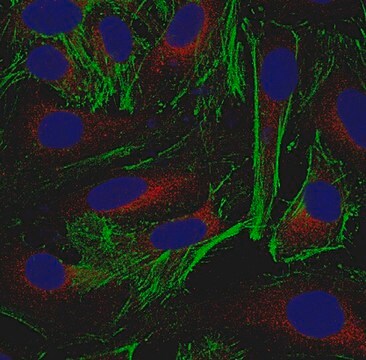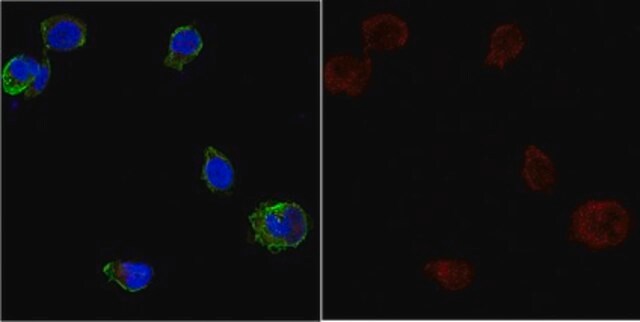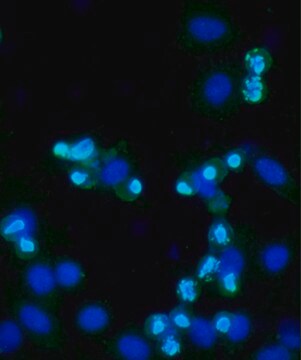ABS1652
Anti-GSTA4 Antibody
serum, from rabbit
Sinônimo(s):
Glutathione S-transferase alpha-4, Glutathione S-transferase A4, Glutathione S-transferase Yk, GSTA4, GST 8-8, GST A4-4, GST K, GST Yk
About This Item
Produtos recomendados
fonte biológica
rabbit
Nível de qualidade
forma do anticorpo
serum
tipo de produto de anticorpo
primary antibodies
clone
polyclonal
reatividade de espécies
mouse, rat
técnica(s)
immunohistochemistry: suitable (paraffin)
western blot: suitable
nº de adesão NCBI
nº de adesão UniProt
Condições de expedição
dry ice
modificação pós-traducional do alvo
unmodified
Descrição geral
Especificidade
Imunogênio
Aplicação
Western Blotting Analysis: A representative lot detected upregulated Glutathione S-transferase alpha-4 in liver cytosolic preparations from mice on high-fat diet (F) when compared with liver samples from mice on regular diet (Meakin, P.J., et al. (2014). Mol. Cell. Biol. 34(17):3305-3320).
Western Blotting Analysis: A representative lot detected upregulated Glutathione S-transferase alpha-4 levels in liver homogenates from mice fed on diets supplemented with the antioxidant butylated hydroxyanisol (BHA) (Chanas, S.A., et al. (2002). Biochem. J. 365:405-416).
Western Blotting Analysis: A representative lot detected purified rat liver GST K (YkYk) and kidney GST J (YkYk), but not Ya, Yc, Yb1, Yb2, Yb3, Yf, or Yn subunits from other forms of purified rat GSTs (Hayes, J.D,, and Mantle, T.J. (1986). Biochem. J. 233(3):779-788).
Signaling
Oxidative Stress
Qualidade
Western Blotting Analysis: A 1:5,000 dilution of this antibody detected GSTA4 in 10 µg of rat kidney tissue lysate.
Descrição-alvo
forma física
Armazenamento e estabilidade
Handling Recommendations: Upon receipt and prior to removing the cap, centrifuge the vial and gently mix the solution. Aliquot into microcentrifuge tubes and store at -20°C. Avoid repeated freeze/thaw cycles, which may damage IgG and affect product performance.
Outras notas
Exoneração de responsabilidade
Não está encontrando o produto certo?
Experimente o nosso Ferramenta de seleção de produtos.
Código de classe de armazenamento
12 - Non Combustible Liquids
Classe de risco de água (WGK)
WGK 1
Ponto de fulgor (°F)
Not applicable
Ponto de fulgor (°C)
Not applicable
Certificados de análise (COA)
Busque Certificados de análise (COA) digitando o Número do Lote do produto. Os números de lote e remessa podem ser encontrados no rótulo de um produto após a palavra “Lot” ou “Batch”.
Já possui este produto?
Encontre a documentação dos produtos que você adquiriu recentemente na biblioteca de documentos.
Nossa equipe de cientistas tem experiência em todas as áreas de pesquisa, incluindo Life Sciences, ciência de materiais, síntese química, cromatografia, química analítica e muitas outras.
Entre em contato com a assistência técnica





![Anti-CD62E [ELAM-1] Antibody, clone 1.2B6 clone 1.2B6, from mouse](/deepweb/assets/sigmaaldrich/product/images/224/939/8a711839-25ef-4e45-badd-208503950c8a/640/8a711839-25ef-4e45-badd-208503950c8a.jpg)

